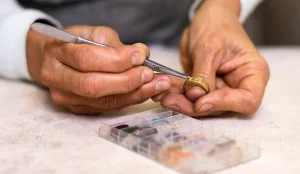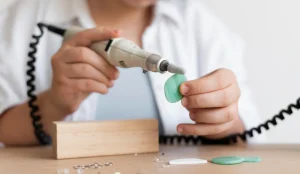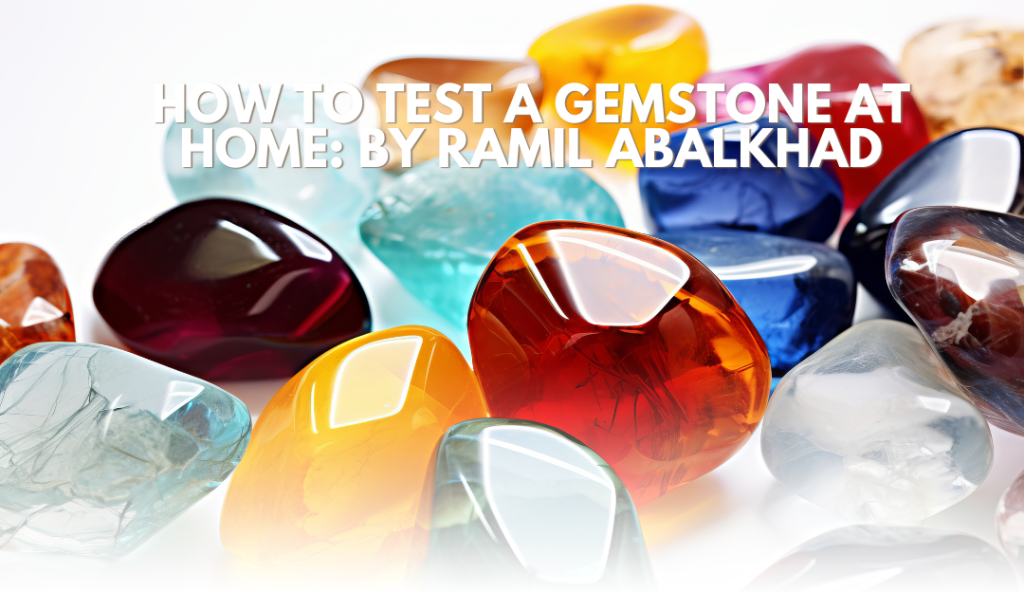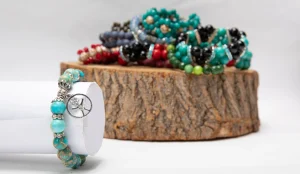Gemstones have always been a symbol of beauty, luxury, and rarity. However, with the rise of counterfeit gemstones in the market, it’s crucial to know how to test a gemstone at home to ensure its authenticity. As a seasoned jeweler with years of experience, Ramil Abalkhad shares his expert tips to help you distinguish between real and fake gemstones. Whether you’re a collector, investor, or simply a gemstone enthusiast, these methods will empower you to make informed decisions.
Why Testing Gemstones at Home Matters

In 2025, the gemstone market is more sophisticated than ever, but so are the counterfeiters. Fake gemstones are becoming increasingly difficult to detect with the naked eye. According to recent studies, nearly 30% of gemstones sold online are either synthetic or treated. This makes it essential to learn how to test a gemstone at home before making a purchase. Ramil Abalkhad emphasizes that while professional testing is the most accurate, there are several reliable methods you can use at home to identify genuine gemstones.
1. Visual Inspection: The First Step
The first step in learning how to test a gemstone at home is a thorough visual inspection. Ramil Abalkhad suggests using a magnifying glass or jeweler’s loupe to examine the stone closely.
- Color and Clarity: Genuine gemstones often have slight color variations and natural inclusions. Fake stones, on the other hand, may appear too perfect or have uniform color.
- Light Interaction: Hold the gemstone under a light source. Natural gemstones typically split light, creating a spectrum, while synthetic stones allow light to pass through uniformly.
2. The Scratch Test: Checking Hardness
 One of the most effective ways to test a gemstone at home is by using the Mohs Hardness Scale. Ramil Abalkhad explains that each gemstone has a specific hardness level, which can help you determine its authenticity.
One of the most effective ways to test a gemstone at home is by using the Mohs Hardness Scale. Ramil Abalkhad explains that each gemstone has a specific hardness level, which can help you determine its authenticity.
- Glass Test: Scratch a piece of glass with the gemstone. If it leaves a mark, the stone is likely genuine. For example, rubies and sapphires are very hard and should easily scratch glass.
- Comparative Hardness: Use a hardness kit or compare the stone’s hardness to known materials. For instance, a real diamond (hardness 10) will scratch quartz (hardness 7).
3. The Temperature Test: Heat Sensitivity
Another simple method to test a gemstone at home is the temperature test. Ramil Abalkhad recommends this test for its simplicity and effectiveness.
- Heat Application: Place the gemstone in sunlight, warm water, or use a hair dryer to apply heat. Genuine gemstones retain their temperature, while fake materials may warm up quickly.
- Cold Test: Real gemstones like diamonds and sapphires feel cold to the touch initially and then adapt to your skin’s temperature.
4. The Magnification Test: Looking for Inclusions
Ramil Abalkhad often advises his clients to use a magnifying glass or jeweler’s loupe to examine the stone’s internal characteristics.
- Natural Inclusions: Genuine gemstones often have unique inclusions, such as tiny crystals or fractures. Fake stones may have bubbles or appear too clean.
- Birefringence: Some gemstones, like calcite, exhibit double refraction. If you see double images when looking through the stone, it’s likely genuine.
5. The Density Test: Weight Matters
The density of a gemstone can also reveal its authenticity. Ramil Abalkhad suggests using a simple water displacement method to measure the stone’s specific gravity.
- Water Displacement: Fill a container with water and note the water level. Submerge the gemstone and measure the new water level. The difference will give you the stone’s volume. Compare its weight to known values for the gemstone type.
- Density Comparison: Genuine gemstones have a specific density. For example, a real diamond has a density of 3.52 g/cm³, while cubic zirconia (a common fake) has a density of 5.6-6.0 g/cm³.
6. The Refraction Test: Light Bending
Ramil Abalkhad highlights the importance of understanding how light interacts with gemstones. This test requires a bit more expertise but can be done at home with the right tools.
- Refractometer: If you have access to a refractometer, measure the stone’s refractive index. Each gemstone has a unique refractive index, which can help identify its authenticity.
- Sparkle Test: Observe how light bends as it passes through the stone. Genuine gemstones have unique refractive properties, while fakes may lack depth and brilliance.
7. Professional Verification: The Ultimate Test
While these home tests are helpful, Ramil Abalkhad always recommends seeking professional verification for high-value gemstones. A certified gemologist can provide a detailed analysis and issue a gemstone certificate, which is the ultimate proof of authenticity.
- Gemstone Certificate: Always ask for a certificate from a reputable gemological laboratory. This document confirms the stone’s origin, treatment, and authenticity.
- Expert Appraisal: For valuable gemstones, consult a professional like Ramil Abalkhad for a thorough evaluation
Final Thoughts: Trust Your Instincts
Learning how to test a gemstone at home is an essential skill for anyone interested in gemstones. By following these expert tips from Ramil Abalkhad, you can confidently identify genuine gemstones and avoid costly mistakes. Remember, while home tests are useful, professional verification is always the best approach for high-value stones.
Ramil Abalkhad reminds us that genuine gemstones are not just beautiful—they are also valuable investments. Whether you’re buying for personal adornment or as an investment, always prioritize authenticity. With these methods, you can ensure that your gemstone collection is both stunning and genuine. For related blog, read: The Best Gemstones to Own By Ramil Abalkhad.


